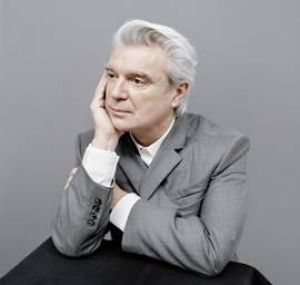DAVID BYRNE "AMERICAN UTOPIA"

American Utopia sarà pubblicato domani 9 Marzo su etichetta Todomundo/Nonesuch Records, accompagnato da un tour mondiale che metterà in scena un concerto che Byrne ha definito “lo spettacolo più ambizioso che abbia mai fatto dai concerti che furono ripresi per Stop Making Sense”
American Utopia va di pari passo con le serie “Reasons To Be Cheerful”, dei reading così chiamati da Byrne in onore della canzone di Ian Dury dello stesso titolo. Nel corso dell’ultimo anno, Byrne ha raccolto storie, notizie, idee e altro materiale che esemplificano o identificano cose che ispirano ottimismo, come una novità tecnologica, un nuovo gruppo musicale, una nuova idea nella pianificazione urbana o nei trasporti – qualcosa vista, sentita o provata. Proprio come l’album pone domande sullo stato attuale della società pur offrendo motivi di sollievo attraverso le canzoni, il contenuto di questi reading riconosce il lato oscuro e la complessità della vita di oggi pur offrendo alternative alla disperazione che ci minaccia. Un punto di raccolta di “Reasons To Be Cheerful”, dove Byrne condivide tutte queste cose, lo si trova qui.
Nonostante nel corso degli ultimi dieci anni David Byrne abbia collaborato con Eno, Norman Cook (aka Fatboy Slim) e più recentemente St. Vincent, American Utopia è il primo album solista di Byrne da Grown Backwards del 2004. American Utopia ha preso forma durante il processo di scrittura e quello di registrazione, incominciando con il collaborator e amico di sempre Eno per poi finire a includere collaborazioni con il preoduttore Rodaidh McDonald (The xx, King Krule, Sampha, Savages) e altre con artisti quali Daniel Lopatin (aka Oneohtrix Point Never), Jam City, Thomas Bartlett (produttore di St. Vincent, aka Doveman), Jack Peñate e altri. L’album è stato registrato a New York nello studio della casa di David, ai Reservoir Studios, Oscilloscope, XL Studios e Crowdspacer Studio e a Londra ai Livingston Studio 1.
Parlando dell’album, Byrne ha detto:
Is this meant ironically? Is it a joke? Do I mean this seriously? In what way? Am I referring to the past or the future? Is it personal or political?
These songs don’t describe an imaginary or possibly impossible place but rather attempt to depict the world we live in now. Many of us, I suspect, are not satisfied with that world—the world we have made for ourselves. We look around and we ask ourselves—well, does it have to be like this? Is there another way? These songs are about that looking and that asking.
This album is indirectly about those aspirational impulses. Sometimes to describe is to reveal, to see other possibilities. To ask a question is to begin the process of looking for an answer. To be descriptive is also to be prescriptive, in a way. The act of asking is a big step. The songs are sincere—the title is not ironic. The title refers not to a specific utopia, but rather to our longing, frustration, aspirations, fears, and hopes regarding what could be possible, what else is possible. The description, the discontent and the desire—I have a feeling that is what these songs touch on.
I have no prescriptions or surefire answers, but I sense that I am not the only one looking and asking, wondering and still holding onto some tiny bit of hope, unwilling to succumb entirely to despair or cynicism.
It’s not easy, but music helps. Music is a kind of model—it often tells us or points us toward how we can be.
La cover dell’album è un lavoro dell’”artista alternativo” Purvis Young, il cui lavoro è spesso una miscela di pittura ed elementi raccolti per strada nella vita di tutti i giorni. E’ un dipinto che raffigura una testa con una faccia di razza e genere indeterminati, mentre sogna, medita o contempla la vita.
Pubblicato il
Pubblicato il
